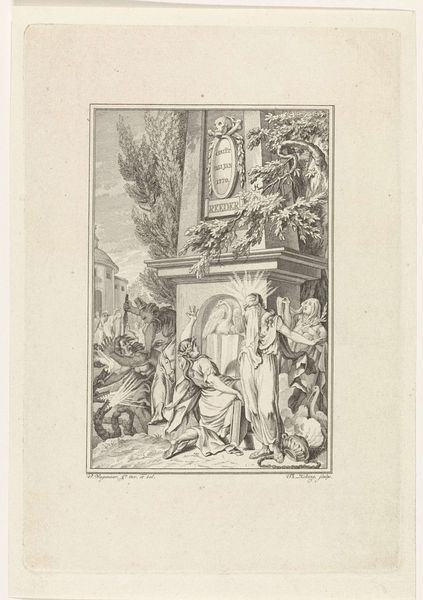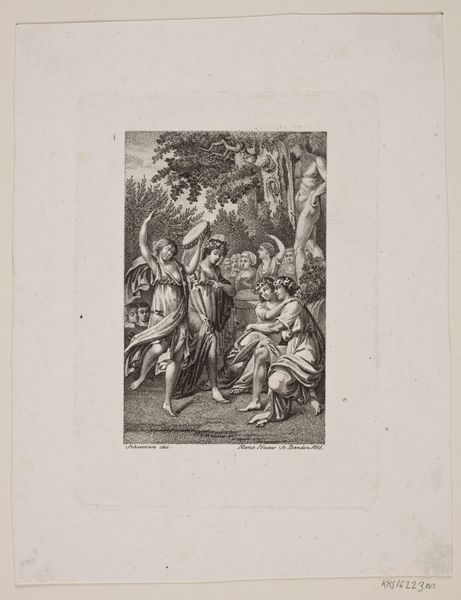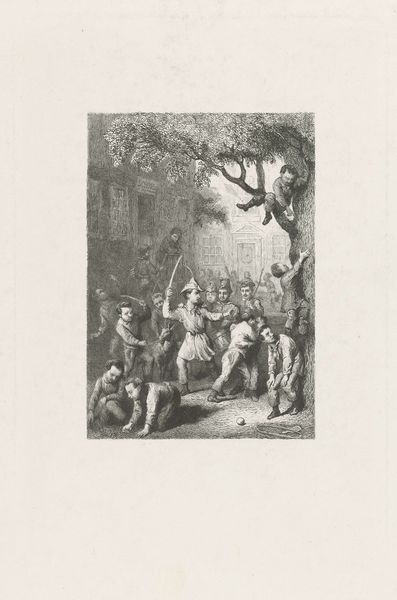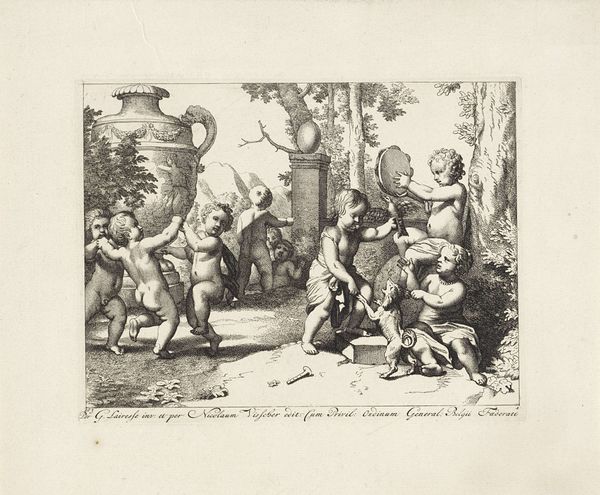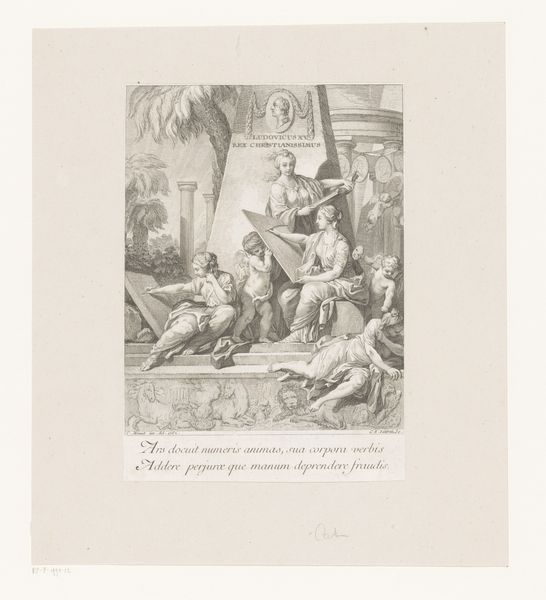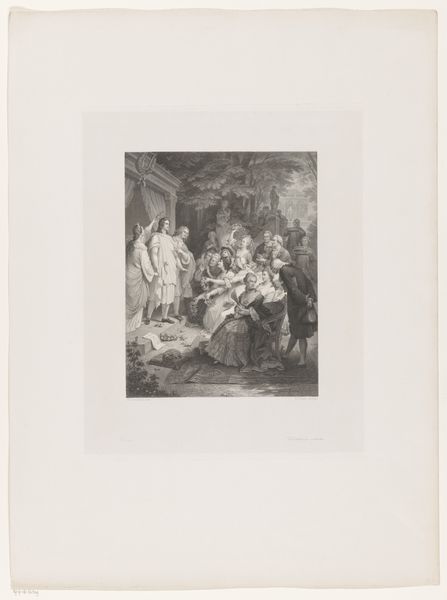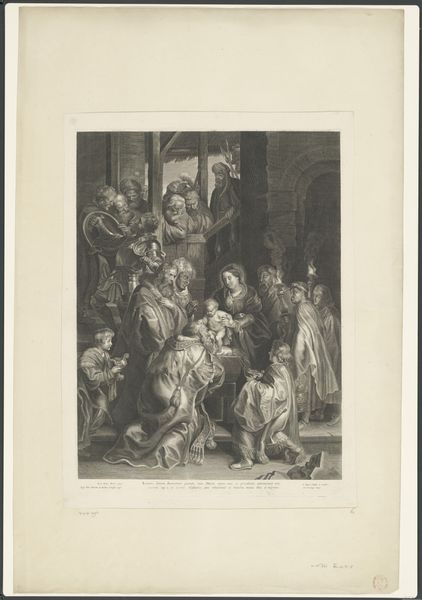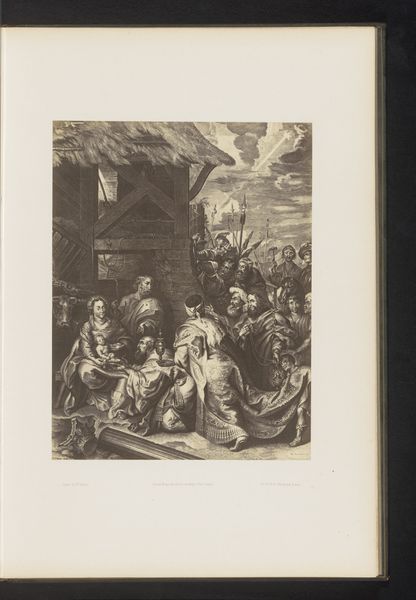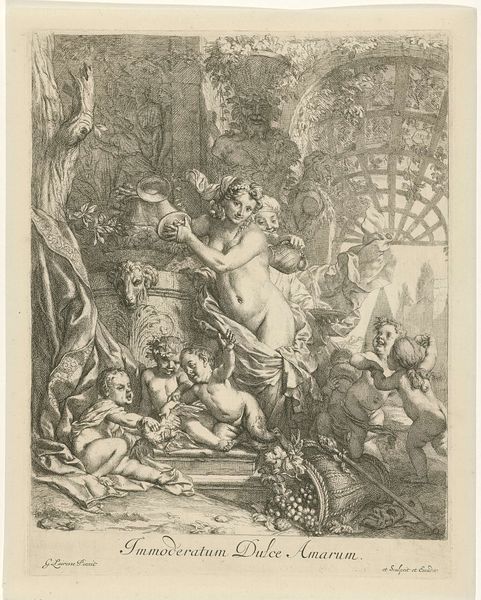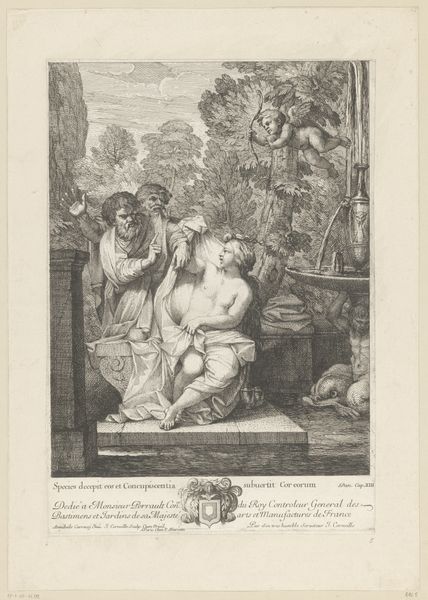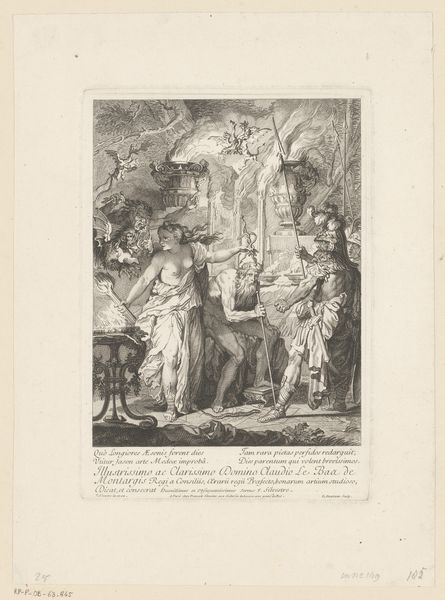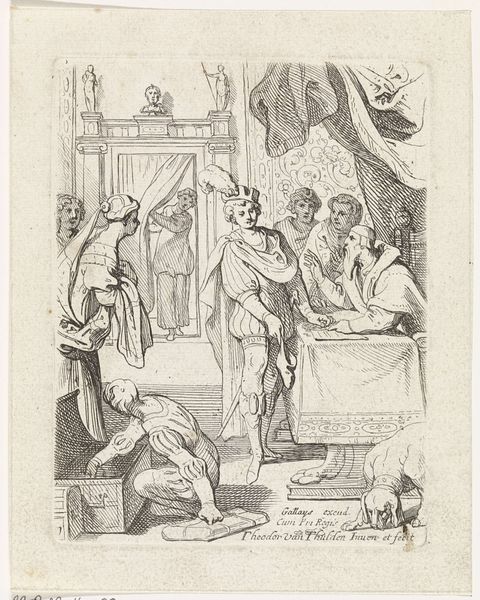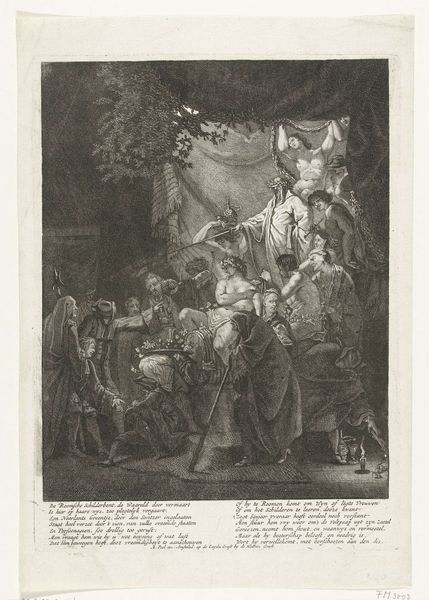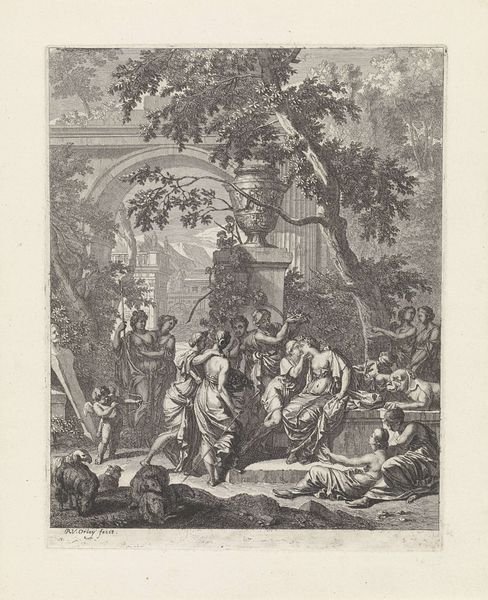
print, engraving
#
allegory
#
baroque
# print
#
etching
#
figuration
#
line
#
nude
#
engraving
Dimensions: height 422 mm, width 291 mm
Copyright: Rijks Museum: Open Domain
Curator: This engraving, Bacchus, comes to us from Gerard de Lairesse, circa 1675 to 1680. It's held here at the Rijksmuseum. What strikes you first about it? Editor: There's a frantic energy in this image. The etching itself is incredibly detailed, but the figures are so animated, bordering on chaotic. A vulnerable dynamic plays out with undertones that seem…troubling. Curator: Absolutely. De Lairesse often drew from classical mythology. Here, we see Bacchus, the Roman god of wine and revelry, and his role often went far beyond simple drunkenness, encompassing ecstasy, freedom, and subversion of social norms. We have Bacchus here presiding over what seems to be a libation of sorts, likely wine, for this infant. Editor: It's a deeply symbolic image, no doubt. But thinking about the power dynamics, who is given the agency in this scene? Who dictates what, and what it represents? The sexualization, even the suggestion of vulnerability is complicated when put against a figure of divine male power like Bacchus. Curator: It's fascinating to consider how Bacchus himself has been reimagined and reshaped throughout history, a vessel for expressing different social and philosophical concerns across various eras. We're still reckoning with the impact of ancient symbols and myths today. Editor: I wonder, in these lines etched onto the paper below the artwork, what this promise is or who gets to claim what from that moment onward. And, given who has had access to these privileges and who have been systematically denied access based on gender, class, race throughout history. Who can claim this as liberation? Curator: Yes! And, consider that through the symbolism of wine itself, the communion it is providing. Even in antiquity, Dionysus, Bacchus' Greek predecessor, and related Bacchanalia traditions became subversive precisely because the lines of who could participate blurred class lines to an extent. And consider the state of revelry and emotional catharsis in stark contrast to social order and self-control? It’s quite striking to behold, now! Editor: So well put. To return again, this work sits at the intersection of aesthetics, power, gender, identity and resistance—it asks us what exactly art holds in its frames. It forces me to re-see even my history here with new insight, and to examine everything once more. Curator: Indeed, every line carries its cultural inheritance. There is the history and the image of wine represented. A whole lineage of symbol interpretation. It seems Gerard de Lairesse managed to encapsulate quite a bit in this etching!
Comments
No comments
Be the first to comment and join the conversation on the ultimate creative platform.
